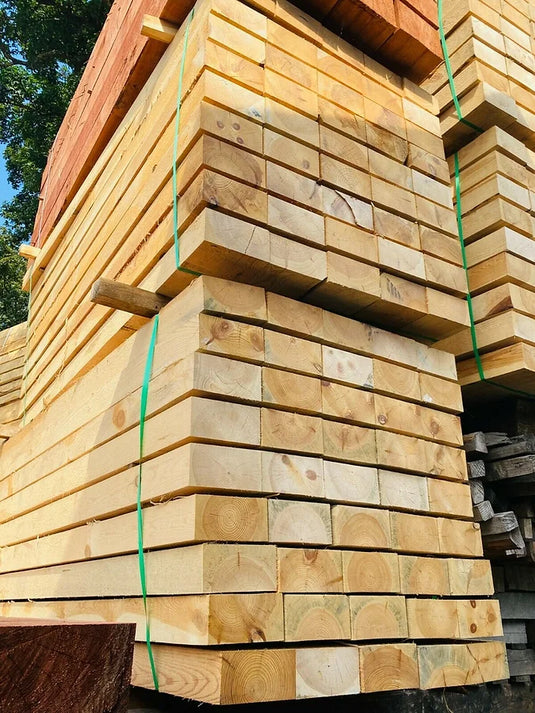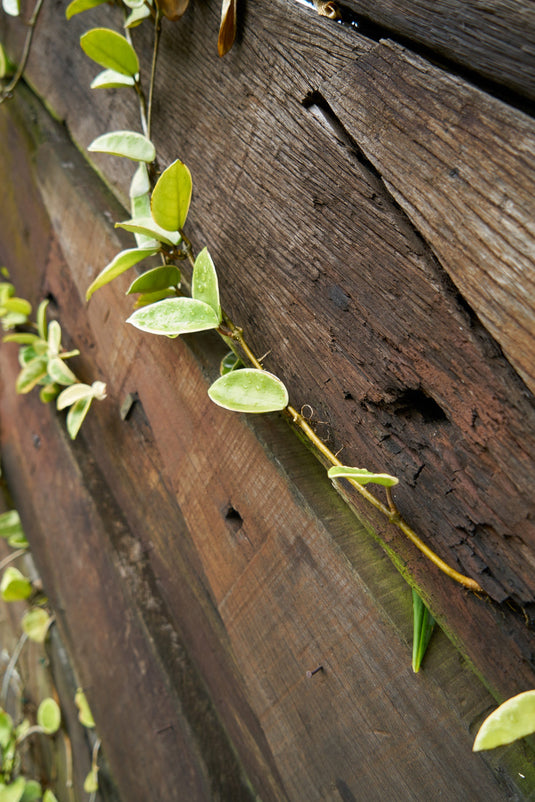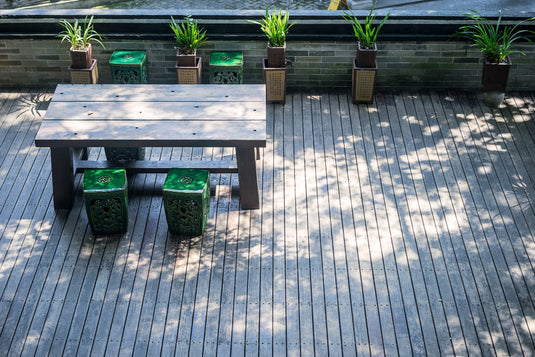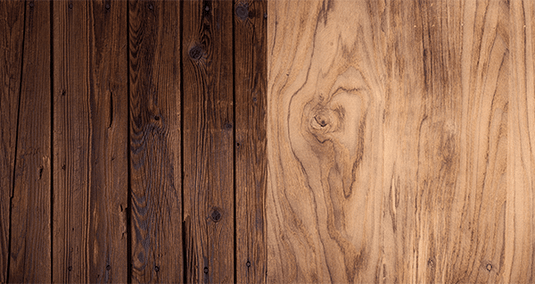Timber is one of the most versatile and beautiful materials for outdoor landscaping — but not all timber is created equal.
Choosing the wrong type of wood can lead to faster weathering, costly repairs, and disappointing results. On the other hand, selecting the right timber for the job ensures your garden structures stay strong, stylish, and stunning for years to come.
At David’s Timber, we supply both softwood and hardwood for outdoor projects. Here's how the pros decide which is the right fit — and how you can too.
What’s the Difference Between Softwood and Hardwood?
Contrary to popular belief, “softwood” and “hardwood” don’t simply refer to how tough the wood feels.
They’re defined by the tree species they come from:
-
Softwood comes from coniferous trees like pine, fir, and spruce.
-
Hardwood comes from deciduous trees like oak, ash, beech and teak.
Generally, hardwoods grow slower and produce denser, more durable timber. But for many projects, treated softwood offers an ideal balance of performance and price.
When to Choose Softwood for Outdoor Projects
Softwood is the go-to choice for many landscaping projects because it’s:
-
Affordable
-
Lightweight and easy to work with
-
Widely available
-
Highly durable when pressure-treated
Best uses for softwood include:
-
Raised garden beds
-
Fence posts and panels
-
Decking frames
-
Edging and path borders
-
Budget-conscious sleeper projects
💡 Pro Tip:
Always opt for pressure-treated softwood for outdoor use. Untreated softwood exposed to the elements will rot quickly, especially in damp UK climates.

Advantages:
-
Easy to cut, drill, and fasten
-
Takes stains and paints well
-
Lower initial cost
-
Available in larger dimensions (perfect for big builds)
When to Choose Hardwood for Outdoor Projects
Hardwood is the premium choice for structures where strength, longevity, and rich natural aesthetics are a priority.
It’s typically:
-
Denser and heavier than softwood
-
More resistant to rot, insects, and wear (even without treatment)
-
Naturally beautiful — great for leaving unstained
Best uses for hardwood include:
-
Luxury decking
-
Feature walls or screens
-
High-end outdoor furniture
-
Garden structures meant to last decades
-
Visible architectural elements
💡 Pro Tip:
Some hardwoods (like oak, beech and teak) weather naturally into stunning silvery tones over time — ideal for a rustic or coastal garden look.

Advantages:
-
Incredible durability (up to 50+ years in some cases)
-
Minimal maintenance compared to softwood
-
Rich, natural colours and textures
-
Higher resistance to fungi and pests
Pressure-Treatment vs Natural Durability: Know the Difference
Pressure-treated softwood and naturally durable hardwood both offer good outdoor performance — but they achieve it differently.
Pressure-treated softwood requires treatment to withstand weather and pests, offers a lower upfront cost, and typically lasts 15–25 years with moderate maintenance. It’s ideal for structures you plan to stain or paint, and for projects where budget is a factor.
Naturally durable hardwood, on the other hand, requires no chemical treatment. It naturally resists rot and insects, often lasting 15–50+ years with minimal maintenance. It’s perfect if you want a natural, luxury look and the longest lifespan possible.
💡 Pro Tip:
If you want a painted finish (e.g., black pergolas, sage green fencing), softwood is easier to prime and paint.
If you want a natural timber look that matures beautifully, hardwood wins every time.
Other Factors Pros Consider When Choosing Timber
It’s not just about softwood vs hardwood. The right choice often depends on:
-
Budget: Higher-end hardwood projects can be expensive but offer unbeatable longevity.
-
Design style: Traditional cottage garden vs sleek modern spaces may favour different timber looks.
-
Location: Coastal areas require timber that can withstand salt-laden air.
-
Usage: High-traffic areas (like steps) need tougher wood than simple decorative panels.
-
Maintenance willingness: Some homeowners prefer the natural weathering of hardwood; others want surfaces they can paint or seal regularly.
Common Mistakes to Avoid
✔️ Don’t assume hardwood is always better — sometimes treated softwood is smarter and more economical for temporary or secondary features.
✔️ Don’t skip pressure treatment on softwood — it’s essential for long-term outdoor exposure.
✔️ Don’t ignore the aesthetic — the timber you pick will define the mood of your garden for years.
Ready to Build Something Brilliant?
At David’s Timber, we supply the right timber for every outdoor project — whether you’re after durable sleepers, beautiful softwood decking made of unbanded boards, or practical framing timber.
Our team can help you:
-
Choose between softwood and hardwood based on your goals
-
Select pressure-treated products built to last
-
Get expert advice for your garden makeover
📞 Get in touch with David’s Timber today to find the perfect materials for your next project — and bring your outdoor ideas to life.





